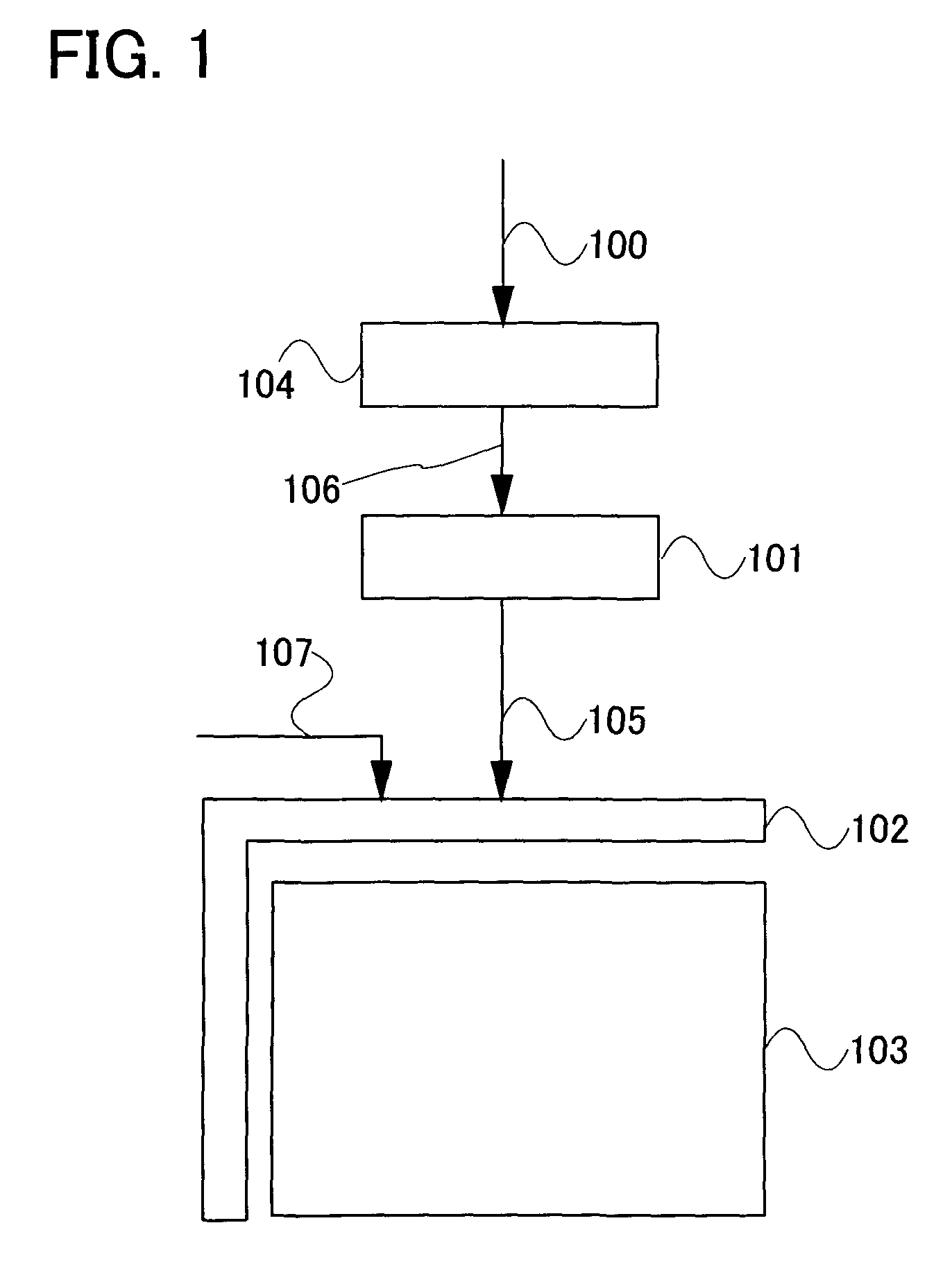Liquid crystal display device, driving method of the liquid crystal display device, and electronic device employing the same device and the same method
- Summary
- Abstract
- Description
- Claims
- Application Information
AI Technical Summary
Benefits of technology
Problems solved by technology
Method used
Image
Examples
embodiment mode 1
[0166]First, a basic principle for describing the present invention will be mentioned in detail.
[0167]A plurality of pixels is provided in a display portion of a display device and is arranged in matrix as an example shown in FIG. 75. In FIG. 75, a plurality of pixels 7504 which is connected to a scanning line 7502 and a signal line 7503 is provided in a display portion 7501. One pixel includes one region or more regions (hereinafter, referred to as a sub-pixel). For example, as shown in FIG. 75, one pixel includes a first sub-pixel (sub-pixel A 7504A) and a second sub-pixel (sub-pixel B 7504B).
[0168]One pixel expresses grayscale of one pixel with the total amount of light to be transmitted through respective sub-pixels A and B. That is, the amount X of light to be transmitted corresponding to a level of grayscale expressed in one pixel is the sum of the amount XA of light to be transmitted through the sub-pixel A and the amount XB of light to be transmitted through the sub-pixel B....
embodiment mode 2
[0261]In this embodiment mode, the liquid crystal display device of the present invention described in Embodiment Mode 1 will be further described. Specifically, in this embodiment mode, a structure of the sub-pixel which constitutes the pixel will be described.
[0262]In FIGS. 7A and 7B in Embodiment Mode 1, the structure is described in which each of the areas of the sub-pixel A and the sub-pixel B is half the area of the pixel. In FIGS. 10A and 10B, a structure will be described in which the areas of the sub-pixel A and the sub-pixel B are different from each other. Horizontal axes and vertical axes in FIGS. 10A and 10B are the same as those in FIGS. 7A and 7B. Note that the area of the sub-pixel A is two thirds of the area of one pixel and the area of the sub-pixel B is one thirds of the area of one pixel. Therefore, in FIGS. 10A and 10B, when the sum of the luminance of the sub-pixel A and the sub-pixel B is L, the maximum value of the luminance of the sub-pixel A is 2L / 3 and tha...
embodiment mode 3
[0279]In this embodiment mode, the liquid crystal display device of the present invention described in Embodiment Modes 1 and 2 will be further described. In this embodiment mode, the aforementioned first period and second period will be specifically described.
[0280]During the first period and the second period described in FIG. 5 in Embodiment Mode 1, any one combination data in the LUT is referred to and the sub-grayscale signal generated in the grayscale data conversion portion is output to each sub-pixel. Even if display is performed with the same level of grayscale, by generating the sub-grayscale signal in the grayscale data conversion portion to perform display of the display portion, the liquid crystal molecules are made slanted in different directions every desired period to increase directions of alignment, so that the viewing characteristics of a viewer can be improved.
[0281]As shown in FIG. 14A, the first period and the second period of the present invention described in...
PUM
 Login to View More
Login to View More Abstract
Description
Claims
Application Information
 Login to View More
Login to View More - R&D
- Intellectual Property
- Life Sciences
- Materials
- Tech Scout
- Unparalleled Data Quality
- Higher Quality Content
- 60% Fewer Hallucinations
Browse by: Latest US Patents, China's latest patents, Technical Efficacy Thesaurus, Application Domain, Technology Topic, Popular Technical Reports.
© 2025 PatSnap. All rights reserved.Legal|Privacy policy|Modern Slavery Act Transparency Statement|Sitemap|About US| Contact US: help@patsnap.com



